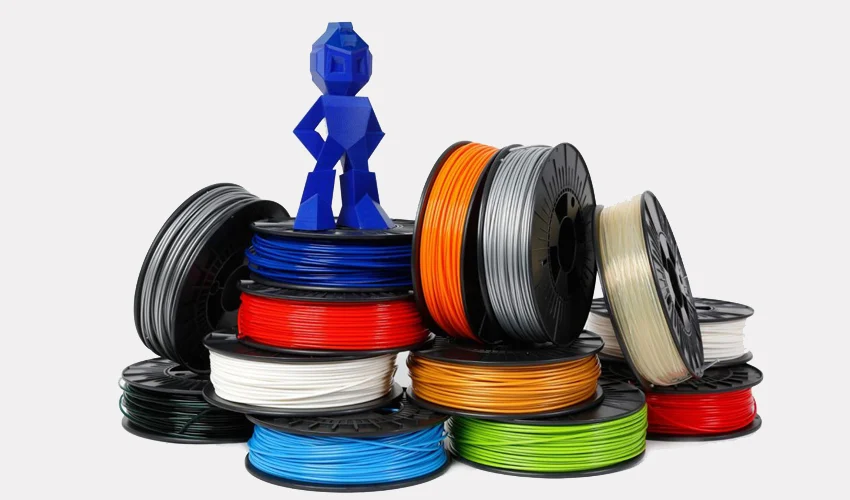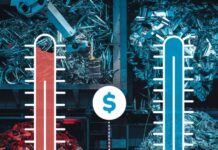3D printing enables rapid prototyping and manufacturing on demand with minimum need for extra tools and lead time. The quality of 3d printing products largely depends on the 3d printing material used.
A product printed multiple times using different 3d printing materials will have the same shape and dimensions but different mechanical properties, thermal properties, dimensional tolerances, functional characteristics, and surface finish.
So selecting the 3d printing material is very important to have an ideal 3D print. Plastic and metal are two different material domains based on which all types of 3d printing materials are manufactured.
Types of 3D printing material
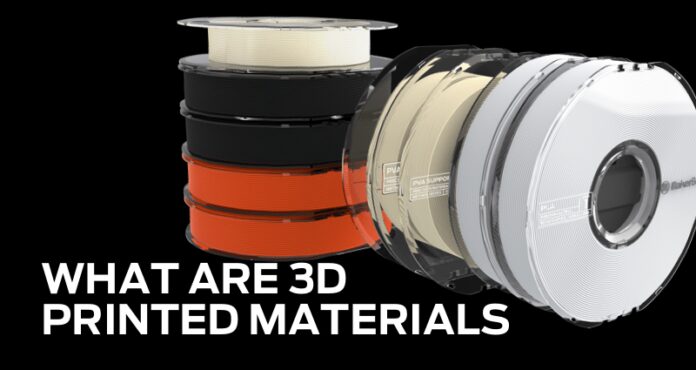
Both plastic and metal based printing materials are classified into three types based on the material phase they are being used.
- Solid or FDM 3D printing material
- Liquid or resin 3D printing material
- Power or SLS/SLM 3D printing material
Each material type like plastic or metal can be used in different material phases. For example, plastics can be used in the form of solid filaments or liquid resin and metal can either be used as a solid filament or in powder form.
List of 3D printing materials
Solid or FDM 3d printing material
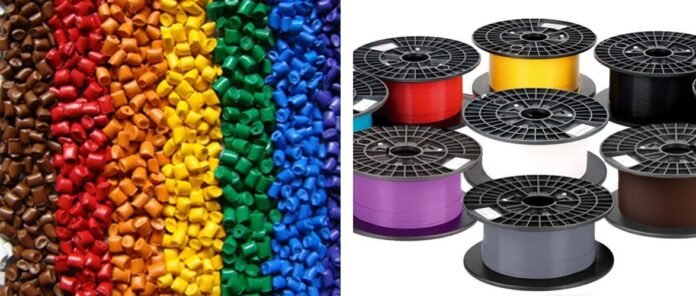
- PLA (Polylactic acid)
- ABS (Acrylonitrile Butadiene Styrene)
- PETG (polyethylene terephthalate glycol)
- Nylon
- TPU (thermoplastic polyurethane)
- PVA (polyvinyl alcohol)
- HIPS (high impact polystyrene)
- Metal infused filament
Liquid or Resin 3d printing material
- Standard Resins
- Clear Resin
- Draft Resin
- Tough and Durable Resins
- Rigid Resins
- High Temp Resin
- Flexible and Elastic Resins
- Medical and dental resins
- Jewelry resins
- Ceramic Resin
Powder or SLS 3d printing material
- Nylon 12
- Nylon 11
- TPU
- Nylon composites
Metal infused filament or SLS/SLM metal powder
- Titanium
- Stainless steel
- Aluminum
- Tool steel
- Nickel alloys
Selecting the 3d printing material
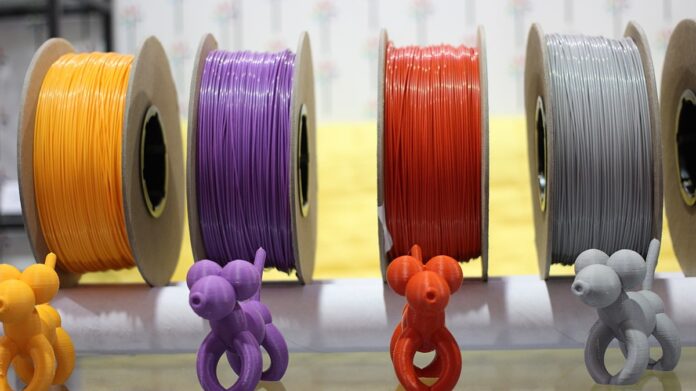
Selection of the best 3d printing material for your product comes with two basic factors
1. What are the performance requirements of your product?
2. Which material can satisfy your product performance requirements?
Answering these two questions will help you shortlist the potential 3d printing materials that can satisfy your product performance requirements. Product performance required includes mechanical properties, chemical properties, physical, and thermal properties. Depending on the applications a product may need some specific values or a combination of some particular properties. Performance requirements as a whole can be divided into three categories
- Low-performance requirements
- Medium performance requirements
- High-performance requirements
Low performance requirements
All those products that do not need much mechanical, chemical, physical, and thermal properties lie in low performance requirements products. They include simple demonstration models of machine parts tools, conceptual models of new innovative products, architecture models, domestic ergonomic items, and test items of research and development phase products. They do not work in any stress bearing applications so do not need any strength or functionality properties.
To print these types of products PLA for FDM 3d printing and standard resin, clear resin, and draft resin for resin 3d printing can be used. All these materials are easily available, easy to print, and very cost efficient. All these products do not offer much in terms of mechanical or thermal stress and are very effective by the atmospheric factory.
Medium performance requirements
These categories belong to all those consumer and small industrial products that do need a moderate level of mechanical, chemical, thermal, and physical properties. These products include stress bearing components like machine parts, and working tools, small function products like the electronic enclosure to give electronic devices against external Impact load, and electric lamps to hold the electric bulb and resist thermal stresses due to bulb heat.
To print these types of products ABS, TPU, PETG, and nylon for FDM 3d printing material are recommended as per the application. ABS is tough to print as compared to other FDM materials as it needs a high nozzle and bed temperature to print but at the same time, it offers high material strength and resistance against moisture and heat.
It is best for domestic and small professional products like a camera stand, door lock handles, the pattern for sand casting computer keyboard components, LEGO bricks, and other similar products.
TPU is recommended for all types of flexible products like sporting goods, medical devices, children’s toys, drive belts, and footwear. PETG is a transparent material and nylon is recommended for all types of small wheels, rollers, Bearings, seals, bushings, and gaskets.
Tough resin, dental resin, high temperature resin, flexible and elastic resins, and rigid resin for resin 3d printing materials are recommended. Products like medical equipment, dental care tools, tooth, tooth crowns, braces, and other similar tools can easily be printed using dental and medical grade resin.
Tough resin, rigid resin, and high temperature resin can be used for printing under-the-hood automotive engines or electrical enclosures, all types of seat belt clasps, and moderate performance 3D prototypes that need to resist external load, vibration, and high temperature.
Tough and rigid resin needs high laser temperature and needs proper heat treatment to obtain complete strength. Resin printing offers better surface finish and dimensions accuracy as compared to FDM.
Nylon 11, nylon 12, and TPU for powder or SLS 3d printing material are recommended for all the above products that need more strength and higher value of all properties than FDM 3d printing. All SLS materials can be printed easily as compared to SLM materials but need heat treatment to obtain complete strength.
SLS material and process are more expensive than FDM and resin printing but they give the highest strength and other properties. FDM and resin material can be used for low stress bearing domestic applications whereas SLS printing offers industrial level strength and product applications.
High performance requirements
High performing 3d printing products include all types of industrial level full scaled products and their working prototypes. These products work as a part of a complete product or a product itself taking all types of external loads and stress just like a product manufactured using conventional methods. This category requires full strength and other properties of any material used.
To print these types of products composite based FDM 3d printing materials or metal infused filament material is used. Depending on the application both materials may need curing or proper heat treatment to enable the full potential materials.
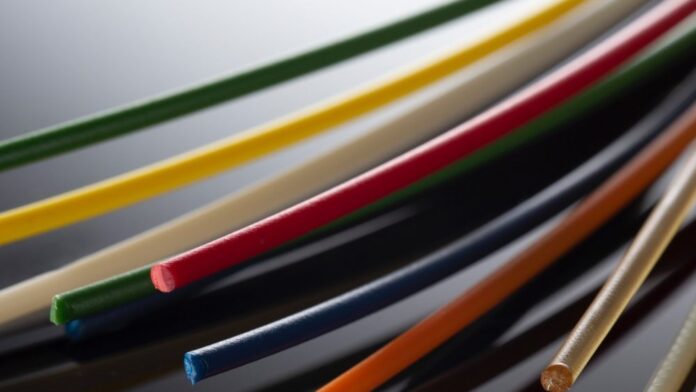
They can be used for producing products like centrifugal pump impellers, complex machining tools, injection molding dies and molds, robotic or prosthetic arms, legs, or other body parts for humans and animals, and any type of machine or structural support part, tool, or equipment that need to resist high stress during work.
All metal based SLS and SLM 3D printing materials can be used for this category of products. Depending on the application titanium can be used for printing aerospace, aircraft, jet engine components, and all other similar products that need to resist very high mechanical stresses, vibrations, heat, and other extreme external factors.
Steel can be used for printing different machine parts, automobile engine internal or other external parts, independent tools, and other complex components. Aluminum and other metals are used in lightweight applications like impellers, wing parts, and other industrial components that need less weight.
Summary of Choosing the Right 3D Printing Material
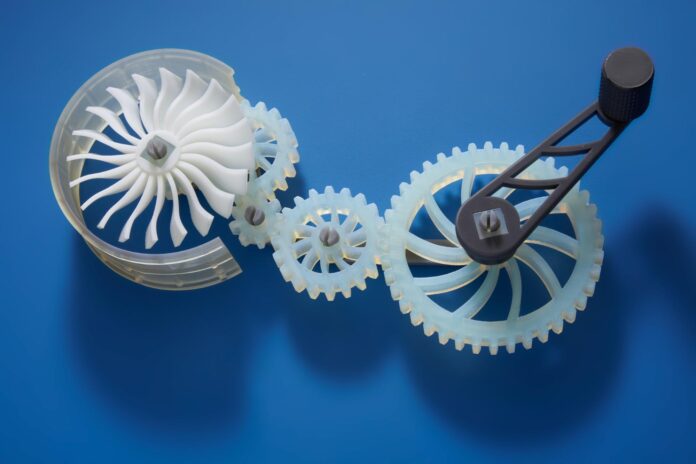
There is a wide range of 3d printing materials available in both plastic and metal domains. A 3d printing material can be a solid filament type, liquid resin type, or powder type based on the 3d printer type being used. Selecting the right 3d printing material for your application is very important. Selecting different 3d printing materials is all about knowing your product performance requirements and material that can satisfy these requirements.
